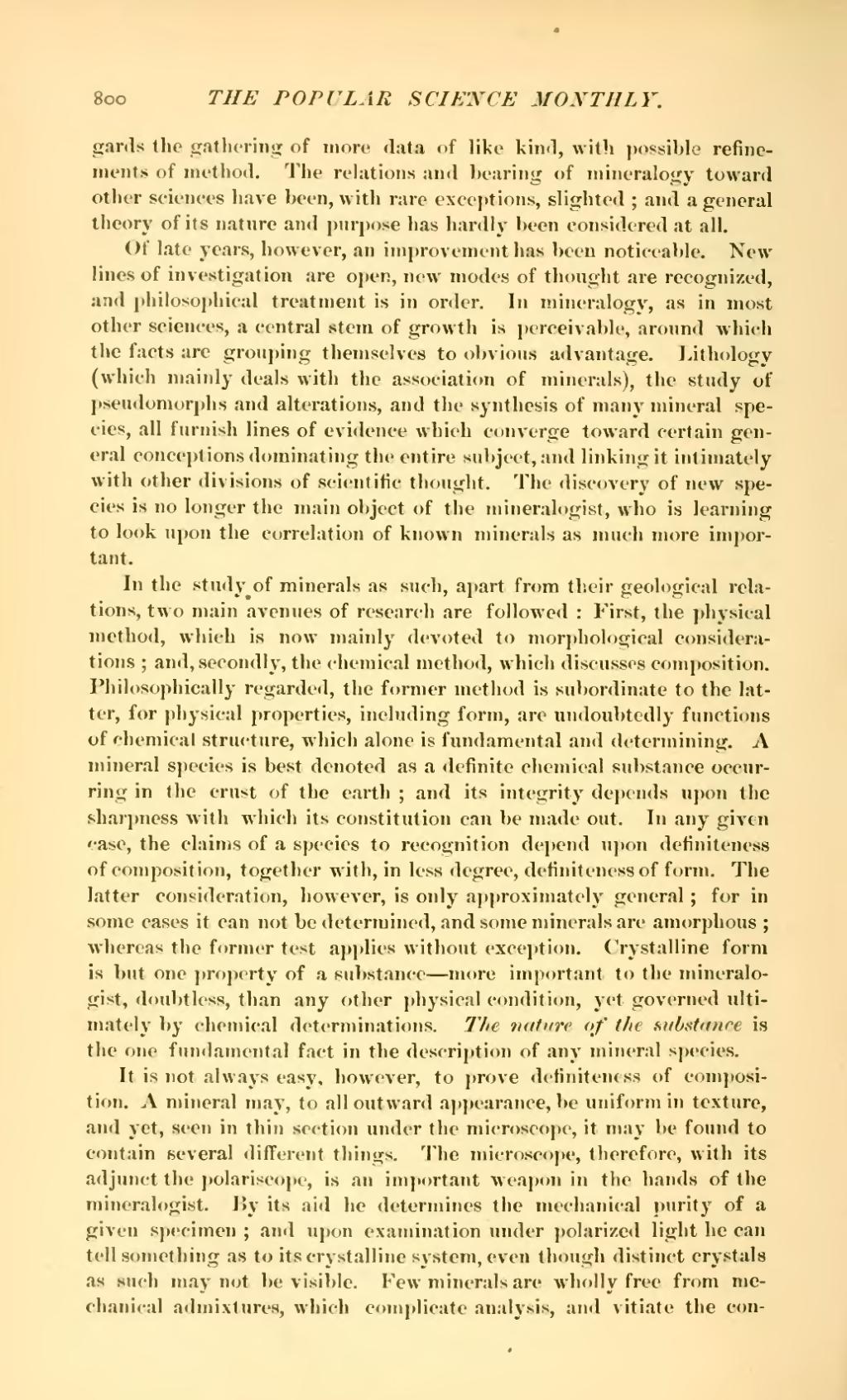gards the gathering of more data of like kind, with possible refinements of method. The relations and bearing of mineralogy toward other sciences have been, with rare exceptions, slighted; and a general theory of its nature and purpose has hardly been considered at all.
Of late years, however, an improvement has been noticeable. New lines of investigation are open, new modes of thought are recognized, and philosophical treatment is in order. In mineralogy, as in most other sciences, a central stem of growth is perceivable, around which the facts are grouping themselves to obvious advantage, Lithology (which mainly deals with the association of minerals), the study of pseudomorphs and alterations, and the synthesis of many mineral species, all furnish lines of evidence which converge toward certain general conceptions dominating the entire subject, and linking it intimately with other divisions of scientific thought. The discovery of new species is no longer the main object of the mineralogist, who is learning to look upon the correlation of known minerals as much more important.
In the study of minerals as such, apart from their geological relations, two main avenues of research are followed: First, the physical method, which is now mainly devoted to morphological considerations; and, secondly, the chemical method, which discusses composition. Philosophically regarded, the former method is subordinate to the latter, for physical properties, including form, are undoubtedly functions of chemical structure, which alone is fundamental and determining. A mineral species is best denoted as a definite chemical substance occurring in the crust of the earth; and its integrity depends upon the sharpness with which its constitution can be made out. In any given case, the claims of a species to recognition depend upon definiteness of composition, together with, in less degree, definiteness of form. The latter consideration, however, is only approximately general; for in some cases it can not be determined, and some minerals are amorphous; whereas the former test applies without exception. Crystalline form is but one property of a substance—more important to the mineralogist, doubtless, than any other physical condition, yet governed ultimately by chemical determinations. The nature of the substance is the one fundamental fact in the description of any mineral species.
It is not always easy, however, to prove definiteness of composition. A mineral may, to all outward appearance, be uniform in texture, and yet, seen in thin section under the microscope, it may be found to contain several different things. The microscope, therefore, with its adjunct the polariscope, is an important weapon in the hands of the mineralogist. By its aid he determines the mechanical purity of a given specimen; and upon examination under polarized light he can tell something as to its crystalline system, even though distinct crystals as such may not be visible. Few minerals are wholly free from mechanical admixtures, which complicate analysis, and vitiate the con-

